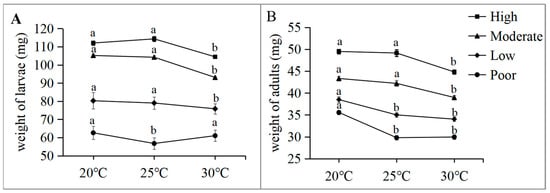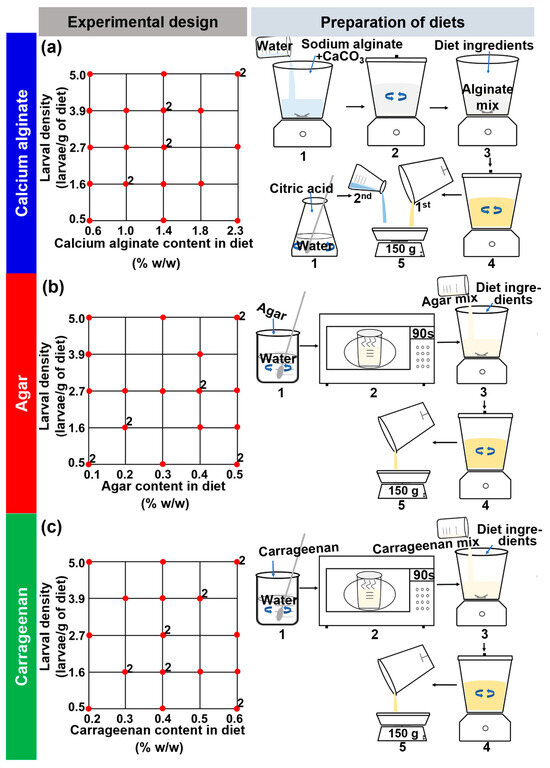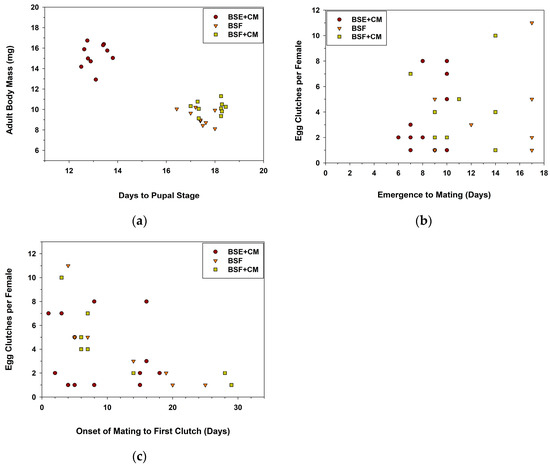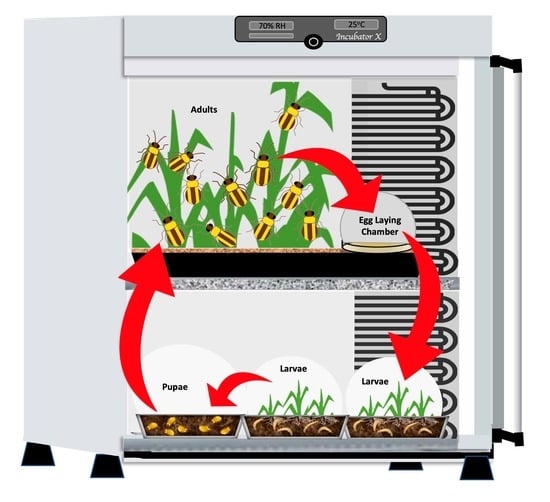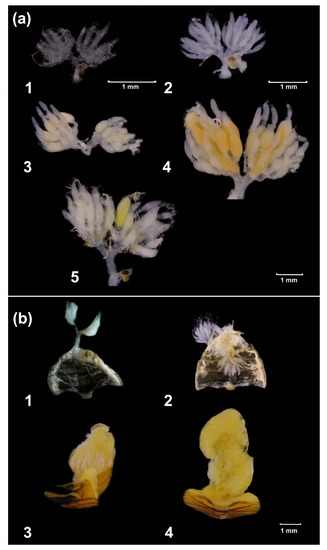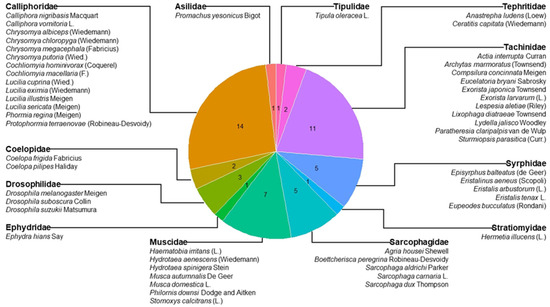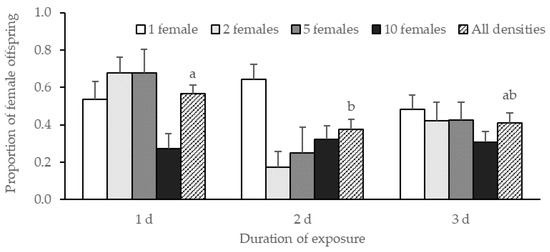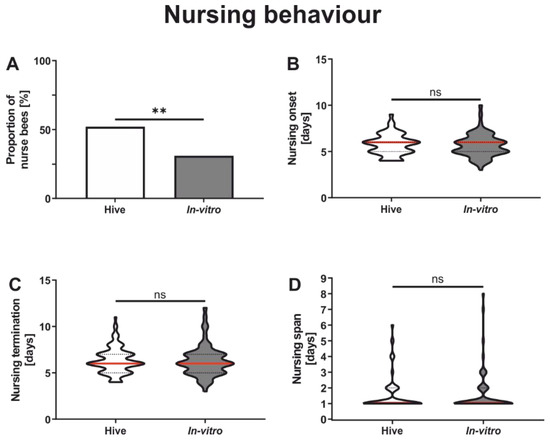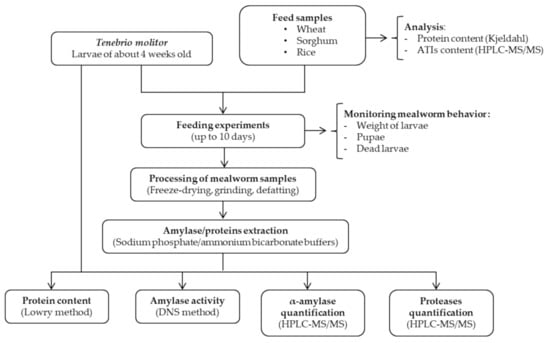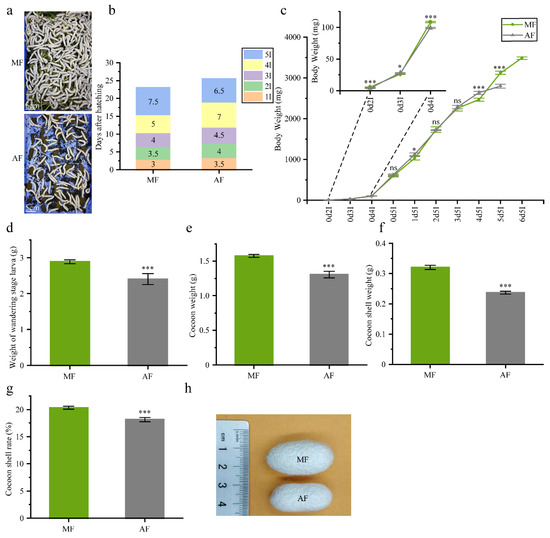Science of Insect Rearing Systems
Share This Topical Collection
Editor
 Prof. Dr. Allen Carson Cohen
Prof. Dr. Allen Carson Cohen
 Prof. Dr. Allen Carson Cohen
Prof. Dr. Allen Carson Cohen
E-Mail
Website
Collection Editor
Department of Entomology and Plant Pathology, North Carolina State University, Raleigh, NC, USA
Interests: insect rearing system dynamics; insect diets; insect nutritional biochemistry and physiology; insect rearing education
Topical Collection Information
Dear Colleagues,
This Topical Collection will focus on the various studies of insect rearing systems approached from a science-based perspective. Investigations of physical, chemical, and biological aspects of rearing systems will be the focus of this collection. Papers are welcomed that explore the various rearing systems components including (but not limited to) genetics of reared insects, including epigenetics, the physiological ecology of reared insects, studies of nutrition, feeding stimulation, digestive physiology and biochemistry, and behavior—all in a rearing context. Papers are welcomed that explore physical/chemical aspects of rearing systems such as rheology or chemical interactions of diets, microclimates in rearing systems, soil dynamics (for rearing soil-dwelling insects), conditions and characteristics of aquatic rearing systems (for example, pH, oxygen, ammonia, and CO2 dynamics in mosquito larvae rearing). Papers that use statistical-based approaches to rearing system optimization are encouraged. For this Topical Collection, authors are urged to design their studies around explicitly stated rationale and hypotheses.
Prof. Dr. Allen Carson Cohen
Collection Editor
Manuscript Submission Information
Manuscripts should be submitted online at www.mdpi.com by registering and logging in to this website. Once you are registered, click here to go to the submission form. Manuscripts can be submitted until the deadline. All submissions that pass pre-check are peer-reviewed. Accepted papers will be published continuously in the journal (as soon as accepted) and will be listed together on the collection website. Research articles, review articles as well as short communications are invited. For planned papers, a title and short abstract (about 100 words) can be sent to the Editorial Office for announcement on this website.
Submitted manuscripts should not have been published previously, nor be under consideration for publication elsewhere (except conference proceedings papers). All manuscripts are thoroughly refereed through a single-blind peer-review process. A guide for authors and other relevant information for submission of manuscripts is available on the Instructions for Authors page. Insects is an international peer-reviewed open access monthly journal published by MDPI.
Please visit the Instructions for Authors page before submitting a manuscript.
The Article Processing Charge (APC) for publication in this open access journal is 2600 CHF (Swiss Francs).
Submitted papers should be well formatted and use good English. Authors may use MDPI's
English editing service prior to publication or during author revisions.
Keywords
- Insect rearing
- Natural and artificial diets
- Microbial interactions in rearing
- Rearing environments
- Experimental design and optimization in rearing
- Genetics and epigenetics in rearing
- Stress and fitness in rearing quality control
Published Papers (11 papers)
Open AccessArticle
Diet Affects the Temperature–Size Relationship in the Blowfly Aldrichina grahami
by
Guanjie Yan, Dandan Li, Guangshuai Wang and Lingbing Wu
Viewed by 495
Abstract
In warmer environments, most ectotherms exhibit a plastic reduction in body size (the temperature–size rule, TSR). However, in such environments, growth is usually accelerated and would be expected to result in maturation at a larger body size, leading to increases in fecundity, survival,
[...] Read more.
In warmer environments, most ectotherms exhibit a plastic reduction in body size (the temperature–size rule, TSR). However, in such environments, growth is usually accelerated and would be expected to result in maturation at a larger body size, leading to increases in fecundity, survival, and mating success, compared to maturation at a smaller size (the ‘life-history puzzle’). To explore these mechanisms, we reared
Aldrichina grahami at 20 °C, 25 °C, and 30 °C, and added a nutritional challenge by using dilutions of pork liver paste to provide diets that ranged in quality from high (undiluted) to moderate (1/8), low (1/16), and poor (1/24). Larvae were randomly sampled for weighing from hatching. Growth curves were fitted to the relationships between growth rate and weight for the third instar larvae. Our results showed that body size was affected by an interaction between temperature and diet, and that following or not following the TSR can vary depending on underfeeding. Moreover, when the TSR was followed as temperature increased, there was a cross-over point that divided the two growth curves into early and later stages, which could be used to help understand the life-history puzzle in warmer temperatures, with the instantaneous growth rate being faster in the early stages of development and then slower in later stages. This study reminds us that animals have evolved to cope with multiple simultaneous environmental changes, and it has thus offered a better understanding of life-history puzzles.
Full article
►▼
Show Figures
Open AccessArticle
Larval Rearing and Nutrition of the Polyphagous Tephritid Pest Anastrepha ludens on Artificial Diets with Calcium Alginate, Agar, or Carrageenan as Gelling Agents at Various Concentrations and across Extreme Larval Density Conditions
by
Carlos Pascacio-Villafán, Luis A. Caravantes-Villatoro, Ixchel Osorio-Paz, Larissa Guillén, Hugo S. García, Erick Enciso-Ortiz, Alma Altúzar-Molina, Roxana Barran-Prior and Martín Aluja
Viewed by 1159
Abstract
Research on larval rearing and nutrition of tephritid flies on artificial diets is key for the sterile insect technique. Here, we examined the effects of the type of gel (calcium alginate, agar, or carrageenan), at varying percentages in artificial diets for the polyphagous
[...] Read more.
Research on larval rearing and nutrition of tephritid flies on artificial diets is key for the sterile insect technique. Here, we examined the effects of the type of gel (calcium alginate, agar, or carrageenan), at varying percentages in artificial diets for the polyphagous pest
Anastrepha ludens, on the physicochemical and nutritional traits of the diets, and the effects of the type of gel, the gel content and the larval density (larvae/g of diet) used in production, quality parameters for mass-reared tephritids, diet removal (an indirect estimation of diet consumption), and nutritional traits of flies. Regardless of the gel content, calcium alginate diets were firmer and more resistant to penetration than the agar and carrageenan diets. The larval recovery, pupation, pupal weight, and flight ability of
A. ludens were lower in calcium alginate diets than in agar and carrageenan diets. Diet removal was higher in calcium alginate diets; however, low levels of ammonium and high levels of uric acid in excretions from larvae on these diets suggest an alteration in protein metabolism. The firmness and penetration resistance characteristics of calcium alginate diets may have limited movement and feeding of larvae, but this could be overcome by the collective feeding of large groups of larvae. Our findings provide insights into the mechanism governing gel-diet rearing systems for
A. ludens.
Full article
►▼
Show Figures
Open AccessArticle
Evaluation of Black Soldier Fly Hermetia illucens as Food for Pink-Spotted Lady Beetle Coleomegilla maculata
by
Eric W. Riddick, Ryan C. Walker, Maria Guadalupe Rojas and Juan A. Morales-Ramos
Viewed by 1447
Abstract
The discovery of new and improved factitious and artificial diets is necessary for cost-effective rearing of predatory arthropods. This study evaluated
Hermetia illucens black soldier fly (BSF) as a suitable alternative food source for rearing the predatory coccinellid
Coleomegilla maculata (
Cmac). The hypothesis
[...] Read more.
The discovery of new and improved factitious and artificial diets is necessary for cost-effective rearing of predatory arthropods. This study evaluated
Hermetia illucens black soldier fly (BSF) as a suitable alternative food source for rearing the predatory coccinellid
Coleomegilla maculata (
Cmac). The hypothesis that BSF larval powder was suitable food to support the growth, development, and reproduction of
Cmac was tested in the laboratory. When compared to a standard in-house diet containing brine shrimp egg powder plus
Chlorella vulgaris green algae and myristic acid (BSE+CM), the BSF and BSF+CM diets reduced immature growth and development. Immatures successfully reared to teneral adults were smaller when fed BSF or BSF+CM rather than BSE+CM. Combining BSF with a powdered artificial diet (AD), i.e., BSF+AD, did not improve predator growth or development, compared to
Cmac reared on BSE+CM.
Cmac oviposition responses, i.e., egg clutch production, to BSF vs. BSE+CM or BSF+AD vs. BSE+CM did not differ significantly. In conclusion, BSF has the potential to be food that supports
Cmac oviposition behavior. Future research is necessary to discover an ideal mixture of BSF, BSE+CM, or AD that supports
Cmac growth, development, and reproduction over multiple generations.
Full article
►▼
Show Figures
Open AccessArticle
An Optimized Small-Scale Rearing System to Support Embryonic Microinjection Protocols for Western Corn Rootworm, Diabrotica virgifera virgifera
by
Fu-Chyun Chu, Pei-Shan Wu, Sofia Pinzi, Nathaniel Grubbs, Allen Carson Cohen and Marcé D. Lorenzen
Viewed by 1022
Abstract
Western corn rootworm (WCR), a major pest of corn, has been reared in laboratories since the 1960s. While established rearing methods are appropriate for maintaining WCR colonies, they are not optimal for performing germline transformation or CRISPR/Cas9-based genome editing. Here we report the
[...] Read more.
Western corn rootworm (WCR), a major pest of corn, has been reared in laboratories since the 1960s. While established rearing methods are appropriate for maintaining WCR colonies, they are not optimal for performing germline transformation or CRISPR/Cas9-based genome editing. Here we report the development of an optimized rearing system for use in WCR functional genomics research, specifically the development of a system that facilitates the collection of preblastoderm embryos for microinjection as well as gathering large larvae and pupae for downstream phenotypic screening. Further, transgenic-based experiments require stable and well-defined survival rates and the ability to manipulate insects at every life stage. In our system, the WCR life cycle (egg to adult) takes approximately 42 days, with most individuals eclosing between 41 and 45 days post oviposition. Over the course of one year, our overall survival rate was 67%. We used this data to establish a quality control system for more accurately monitoring colony health. Herein, we also offer detailed descriptions for setting up single-pair crosses and conducting phenotypic screens to identify transgenic progeny. This study provides a model for the development of new rearing systems and the establishment of highly controlled processes for specialized purposes.
Full article
►▼
Show Figures
Open AccessArticle
Signal and Nutritional Effects of Mixed Diets on Reproduction of a Predatory Ladybird, Cheilomenes propinqua
by
Andrey N. Ovchinnikov, Antonina A. Ovchinnikova, Sergey Y. Reznik and Natalia A. Belyakova
Cited by 1 | Viewed by 891
Abstract
It is known that food has a double impact on females of predatory ladybirds: qualitative signal effect (the onset of oogenesis) and quantitative nutritional effect (the increase in oogenesis intensity). We compared the patterns of these effects by feeding
Cheilomenes propinqua females on
[...] Read more.
It is known that food has a double impact on females of predatory ladybirds: qualitative signal effect (the onset of oogenesis) and quantitative nutritional effect (the increase in oogenesis intensity). We compared the patterns of these effects by feeding
Cheilomenes propinqua females on mixed diets: unlimited low-quality prey (eggs of the grain moth
Sitotroga cerealella) and limited high-quality prey (the green peach aphid
Myzus persicae: 0, 2, 10, and 50 aphids per day). About half of the females fed only on the grain moth eggs oviposited and their fecundity was very low. Daily consumption of 2 aphids increased the proportion of egg-laying females whereas only consumption of 10 aphids increased their mean fecundity. Thus, the threshold of the signal effect was lower than that of the nutritional effect. As applied to mass rearing, we conclude that the addition of high-quality prey to low-quality food causes a substantial increase in egg production, although the economic feasibility of this method is not clear. Regarding biological control of pests by preventing colonization, we conclude that the fecundity of
C. propinqua females supplied with the grain moth eggs in the absence of aphids will be low but the appearance of pests will cause a proportional increase in the mean fecundity of ladybirds.
Full article
►▼
Show Figures
Open AccessReview
How Rearing Systems for Various Species of Flies Benefit Humanity
by
Carlos Pascacio-Villafán and Allen Carson Cohen
Cited by 4 | Viewed by 2307
Abstract
Flies (Diptera) have played a prominent role in human history, and several fly species are reared at different scales and for different beneficial purposes worldwide. Here, we review the historical importance of fly rearing as a foundation for insect rearing science and technology
[...] Read more.
Flies (Diptera) have played a prominent role in human history, and several fly species are reared at different scales and for different beneficial purposes worldwide. Here, we review the historical importance of fly rearing as a foundation for insect rearing science and technology and synthesize information on the uses and rearing diets of more than 50 fly species in the families Asilidae, Calliphoridae, Coelopidae, Drosophilidae, Ephydridae, Muscidae, Sarcophagidae, Stratiomyidae, Syrphidae, Tachinidae, Tephritidae, and Tipulidae. We report more than 10 uses and applications of reared flies to the well-being and progress of humanity. We focus on the fields of animal feed and human food products, pest control and pollination services, medical wound therapy treatments, criminal investigations, and on the development of several branches of biology using flies as model organisms. We highlight the relevance of laboratory-reared
Drosophila melanogaster Meigen as a vehicle of great scientific discoveries that have shaped our understanding of many biological systems, including the genetic basis of heredity and of terrible diseases such as cancer. We point out key areas of fly-rearing research such as nutrition, physiology, anatomy/morphology, genetics, genetic pest management, cryopreservation, and ecology. We conclude that fly rearing is an activity with great benefits for human well-being and should be promoted for future advancement in diverse and innovative methods of improving existing and emerging problems to humanity.
Full article
►▼
Show Figures
Open AccessArticle
Factors Affecting Progeny Production and Sex Ratio of Gryon aetherium (Hymenoptera: Scelionidae), a Candidate Biological Control Agent for Bagrada hilaris (Hemiptera: Pentatomidae)
by
Evelyne Hougardy and Brian N. Hogg
Viewed by 1346
Abstract
Manipulating the factors that influence progeny production and sex ratio in parasitoids can help maximize the production of quarantine bioassays and/or mass releases. In a series of experiments, we studied the effects of several factors on offspring production and sex ratio in the
[...] Read more.
Manipulating the factors that influence progeny production and sex ratio in parasitoids can help maximize the production of quarantine bioassays and/or mass releases. In a series of experiments, we studied the effects of several factors on offspring production and sex ratio in the parasitoid
Gryon aetherium (Hymenoptera: Scelionidae), a candidate biological control agent for
Bagrada hilaris (Hemiptera: Pentatomidae). Progeny production was influenced by maternal age and dropped when females were 24 or 28 days old and decreased on the second day of exposure. Overall, the offspring sex ratio was highly variable in
G. aetherium and was affected by the duration of exposure, with higher proportions of females emerging after one day of exposure than after two days, but was not affected by female density, female age/host deprivation, or temperature during oviposition. Progeny production was affected by the temperature during oviposition and was highest at 26.6 °C. The results indicate that production of
G. aetherium can be maximized at one day of exposure, using females that are less than 24 d old, and at temperatures of around 26 °C.
Full article
►▼
Show Figures
Open AccessArticle
Midgut and Head Transcriptomic Analysis of Silkworms Reveals the Physiological Effects of Artificial Diets
by
Juan Li, Chunbing Chen and Xingfu Zha
Cited by 7 | Viewed by 2110
Abstract
Silkworms, a model lepidopteran insect, have a very simple diet. Artificial diets as an alternative nutrient source for silkworms are gradually being developed. To understand the effects of various nutrients on the growth and development of silkworms, we studied the transcriptomic differences in
[...] Read more.
Silkworms, a model lepidopteran insect, have a very simple diet. Artificial diets as an alternative nutrient source for silkworms are gradually being developed. To understand the effects of various nutrients on the growth and development of silkworms, we studied the transcriptomic differences in the midgut and head tissues of male and female silkworms fed either fresh mulberry leaves or artificial diets. In the artificial diet group, compared with the control group (fed mulberry leaves), 923 and 619 differentially expressed genes (DEGs) were identified from the midgut, and 2969 and 3427 DEGs were identified from the head, in female and male silkworms. According to our analysis, the DEGs were mainly involved in the digestion and absorption of nutrients and silkworm innate immunity. These experimental results provide insights into the effects of different foods, such as artificial diets or fresh mulberry leaves, on silkworms.
Full article
►▼
Show Figures
Open AccessArticle
In Vitro Rearing Changes Social Task Performance and Physiology in Honeybees
by
Felix Schilcher, Lioba Hilsmann, Lisa Rauscher, Laura Değirmenci, Markus Krischke, Beate Krischke, Markus Ankenbrand, Benjamin Rutschmann, Martin J. Mueller, Ingolf Steffan-Dewenter and Ricarda Scheiner
Cited by 2 | Viewed by 2837
Abstract
In vitro rearing of honeybee larvae is an established method that enables exact control and monitoring of developmental factors and allows controlled application of pesticides or pathogens. However, only a few studies have investigated how the rearing method itself affects the behavior of
[...] Read more.
In vitro rearing of honeybee larvae is an established method that enables exact control and monitoring of developmental factors and allows controlled application of pesticides or pathogens. However, only a few studies have investigated how the rearing method itself affects the behavior of the resulting adult honeybees. We raised honeybees in vitro according to a standardized protocol: marking the emerging honeybees individually and inserting them into established colonies. Subsequently, we investigated the behavioral performance of nurse bees and foragers and quantified the physiological factors underlying the social organization. Adult honeybees raised in vitro differed from naturally reared honeybees in their probability of performing social tasks. Further, in vitro-reared bees foraged for a shorter duration in their life and performed fewer foraging trips. Nursing behavior appeared to be unaffected by rearing condition. Weight was also unaffected by rearing condition. Interestingly, juvenile hormone titers, which normally increase strongly around the time when a honeybee becomes a forager, were significantly lower in three- and four-week-old in vitro bees. The effects of the rearing environment on individual sucrose responsiveness and lipid levels were rather minor. These data suggest that larval rearing conditions can affect the task performance and physiology of adult bees despite equal weight, pointing to an important role of the colony environment for these factors. Our observations of behavior and metabolic pathways offer important novel insight into how the rearing environment affects adult honeybees.
Full article
►▼
Show Figures
Open AccessArticle
Effect of Cereal α-Amylase/Trypsin Inhibitors on Developmental Characteristics and Abundance of Digestive Enzymes of Mealworm Larvae (Tenebrio molitor L.)
by
Sorel Tchewonpi Sagu, Eva Landgräber, Ina M. Henkel, Gerd Huschek, Thomas Homann, Sara Bußler, Oliver K. Schlüter and Harshadrai Rawel
Cited by 7 | Viewed by 3345
Abstract
The objective of this work was to investigate the potential effect of cereal α-amylase/trypsin inhibitors (ATIs) on growth parameters and selective digestive enzymes of
Tenebrio molitor L. larvae. The approach consisted of feeding the larvae with wheat, sorghum and rice meals containing different
[...] Read more.
The objective of this work was to investigate the potential effect of cereal α-amylase/trypsin inhibitors (ATIs) on growth parameters and selective digestive enzymes of
Tenebrio molitor L. larvae. The approach consisted of feeding the larvae with wheat, sorghum and rice meals containing different levels and composition of α-amylase/trypsin inhibitors. The developmental and biochemical characteristics of the larvae were assessed over feeding periods of 5 h, 5 days and 10 days, and the relative abundance of α-amylase and selected proteases in larvae were determined using liquid chromatography tandem mass spectrometry. Overall, weight gains ranged from 21% to 42% after five days of feeding. The larval death rate significantly increased in all groups after 10 days of feeding (
p < 0.05), whereas the pupation rate was about 25% among larvae fed with rice (
Oryza sativa L.) and
Siyazan/
Esperya wheat meals, and only 8% and 14% among those fed with
Damougari and
S35 sorghum meals. As determined using the Lowry method, the protein contents of the sodium phosphate extracts ranged from 7.80 ± 0.09 to 9.42 ± 0.19 mg/mL and those of the ammonium bicarbonate/urea reached 19.78 ± 0.16 to 37.47 ± 1.38 mg/mL. The total protein contents of the larvae according to the Kjeldahl method ranged from 44.0 and 49.9 g/100 g. The relative abundance of α-amylase, CLIP domain-containing serine protease, modular serine protease zymogen and C1 family cathepsin significantly decreased in the larvae, whereas dipeptidylpeptidase I and chymotrypsin increased within the first hours after feeding (
p < 0.05). Trypsin content was found to be constant independently of time or feed material. Finally, based on the results we obtained, it was difficult to substantively draw conclusions on the likely effects of meal ATI composition on larval developmental characteristics, but their effects on the digestive enzyme expression remain relevant.
Full article
►▼
Show Figures
Open AccessArticle
Comparative Fecal Metabolomes of Silkworms Being Fed Mulberry Leaf and Artificial Diet
by
DaoYuan Qin, GenHong Wang, ZhaoMing Dong, QingYou Xia and Ping Zhao
Cited by 17 | Viewed by 3239
Abstract
Metabonomics accurately monitors the precise metabolic responses to various dietary patterns. Metabolic profiling allows simultaneous measurement of various fecal metabolites whose concentrations may be affected by food intake. In this study, we analyzed the fecal metabolomes of silkworm (
Bombyx mori) larvae
[...] Read more.
Metabonomics accurately monitors the precise metabolic responses to various dietary patterns. Metabolic profiling allows simultaneous measurement of various fecal metabolites whose concentrations may be affected by food intake. In this study, we analyzed the fecal metabolomes of silkworm (
Bombyx mori) larvae reared on fresh mulberry leaves and artificial diets. 57 differentially expressed metabolites were identified by gas chromatography–mass spectrometry. Of these, 39 were up-regulated and 18 were downregulated in the mulberry leaf meal group. Most of the amino acids, carbohydrates and lipids associated with physical development and silk protein biosynthesis were enriched in silkworms reared on mulberry leaves. In contrast, the urea, citric acid,
D-pinitol,
D-(+)-cellobiose and
N-acetyl glucosamine levels were relatively higher in the silkworm feeding on the artificial diets. The findings of this study help clarify the association between diet and metabolic profiling.
Full article
►▼
Show Figures






